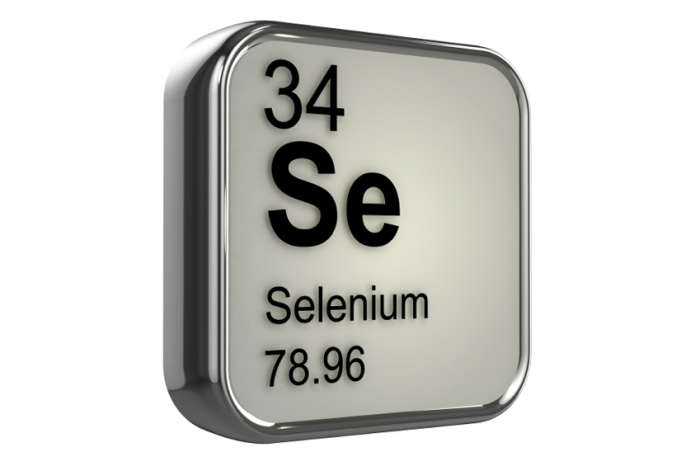Selenium is an essential trace mineral important for cognitive function, a healthy immune system and fertility for both men and women. Selenium is found in a variety of foods, the richest sources being Brazil nuts, seafood and organ meats.
The amount of selenium in food often depends on the selenium concentration of the soil and water where the food was grown or raised.
This article provides an in-depth look at recommended intake of selenium, its possible health benefits, foods high in selenium and any potential health risks of consuming selenium.
Recommended intake
The Recommended Daily Allowance (RDA) for selenium is 55 micrograms per day for adults. Pregnant and lactating women have a slightly higher need for selenium at 60 and 70 micrograms per day, respectively.

Selenium is an essential trace mineral important for cognitive function, a healthy immune system and fertility for both men and women.
Selenium deficiency is rare worldwide, often takes years to develop and is usually only found in regions with severely low selenium content in the soil.
Several regions in China with low soil selenium content have eradicated deficiencies in the population through supplementation programs.1
Selenium supplements are available, but it's best to obtain any vitamin or mineral through food. It is not the individual vitamin or mineral alone that make certain foods an important part of our diet, but the synergy of that foods nutrients working together.
It has been proven time and again that isolating certain nutrients in supplement form will not provide the same health benefits as consuming the nutrient from a whole food. First focus on obtaining your daily selenium requirement from foods, then use supplements as a backup if needed.
Possible health benefits of consuming selenium
Selenium is involved in the production of prostaglandins in the body, which regulate inflammation and may reduce inflammation related to Rheumatoid arthritis.
A study out of the Netherlands has linked selenium intake to a lower risk of prostate cancer. Researchers tested the levels of selenium in the toenails of study participants, a marker that measures long-term selenium intake.
The researchers found that the greater the level of selenium in the toenail, the lower the risk for prostate cancer in study participants. Of note, earlier studies investigating a link between selenium and prostate cancer had varying results.2
Selenium works in close conjunction with vitamin E as an antioxidant to prevent the formation of free radicals and in turn, may reduce the risk of skin cancer and prevent sunburn.4
Foods sources of selenium

Brazil nuts are a good source of selenium, with 1 ounce containing 543 micrograms.
- Brazil nuts, 1 ounce: 543 micrograms
- Halibut, baked, 1 fillet: 148 micrograms
- Tuna, canned, 3 ounces: 68 micrograms
- Oysters, raw, 3 ounces: 56 micrograms
- Rice, white, long grain, 1 cup: 44 micrograms
- Lobster, 3 ounces: 36 micrograms
- Sunflower seeds, ¼ cup: 25 micrograms
- Egg, 1 large: 16 micrograms
- Bread, whole wheat, 1 slice: 10 micrograms.
The amount of selenium in grains and grain-based foods greatly depends on soil content.
Most fruits and vegetables are low in selenium.
Potential health risks of consuming selenium
Selenium toxicity (also rare) can cause skin and nail changes, tooth decay and GI and neurological abnormalities.
It is the total diet or overall eating pattern that is most important in disease prevention and achieving good health. It is better to eat a diet with a variety than to concentrate on individual nutrients as the key to good health.
References:
1.
Mahan, L. Kathleen and
Escott-Stump, Sylvia. Krause’s Food & Nutrition Therapy, 12th edition.
Saunders Elsevier, St. Louis, MS, Copyright 2008.
2.
Selenium may be protective against advanced prostate cancer,
Today’s Dietitian, accessed 8 January 2014.
3.
Thyroid disease and diet —
nutrition plays a part in maintaining thyroid health, Cheryl Harris,
MPH, RD, Today’s Dietitian, Vol. 14 No. 7 P. 40.
4.
Skin: what to eat for more
beautiful skin, Nutrition 411, review date April 2014, accessed 8
January 2015.
No comments:
Post a Comment